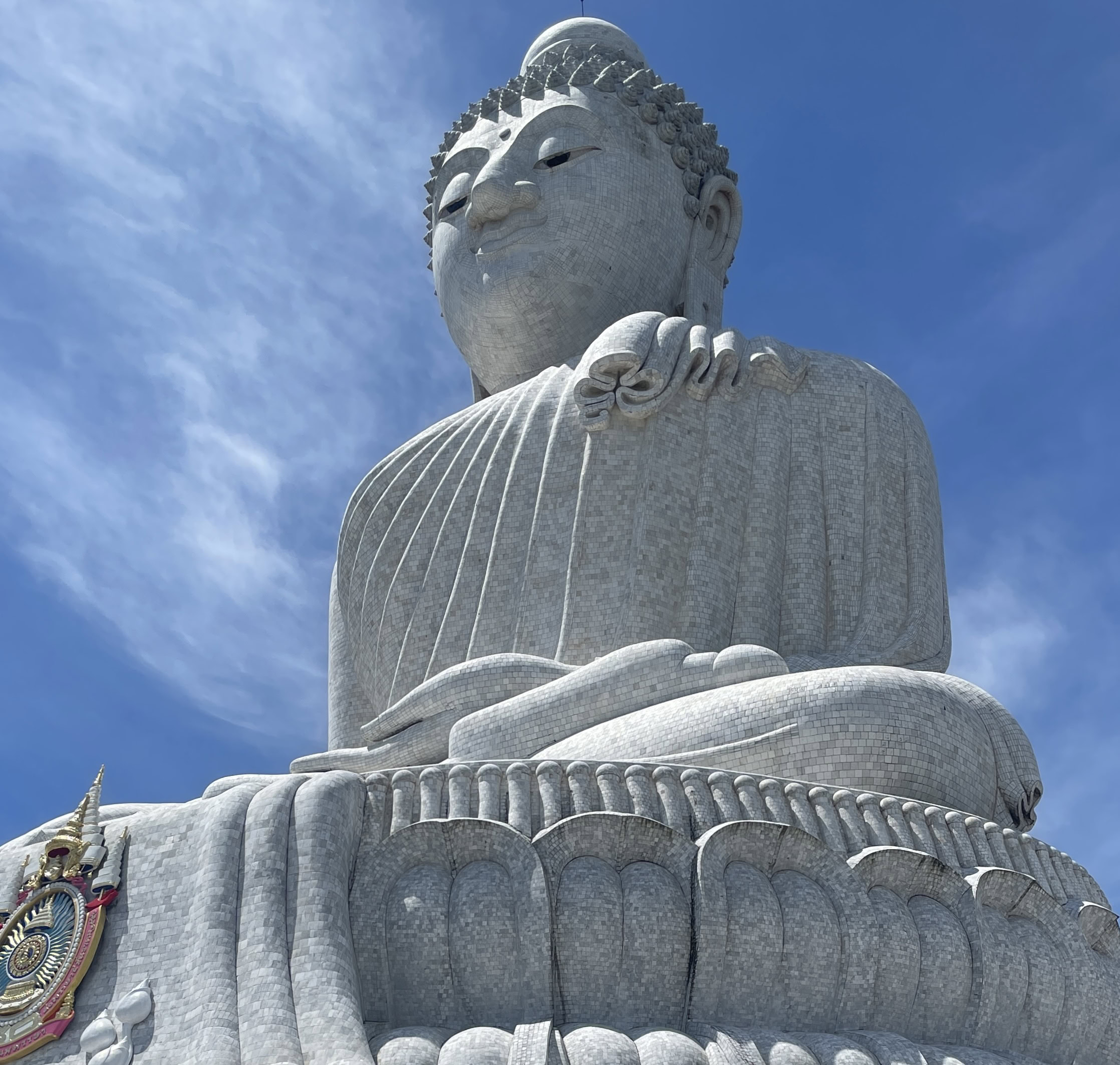11 Tips for Cultural Etiquette in Thailand
Thailand is one of those countries that immediately grabs your attention, not just for its beaches and food, but for the people.
Kindness and politeness aren’t just surface-level here; they’re baked into everyday interactions.
That’s why understanding cultural etiquette in Thailand is so important, especially if you’re visiting from somewhere like North America or Europe, where norms can feel very different.
The truth is, you’re not expected to be perfect, but showing even a little effort goes a long way in Thai culture.
Whether you’re navigating street food stalls, entering sacred temples, or just sharing a taxi with locals, the way you carry yourself matters.
This guide isn’t about rules or “getting it right”; it’s about helping you avoid awkward moments and show up as a respectful traveler. Because in Thailand, how you act speaks volumes.
Dress Modestly, Especially at Temples
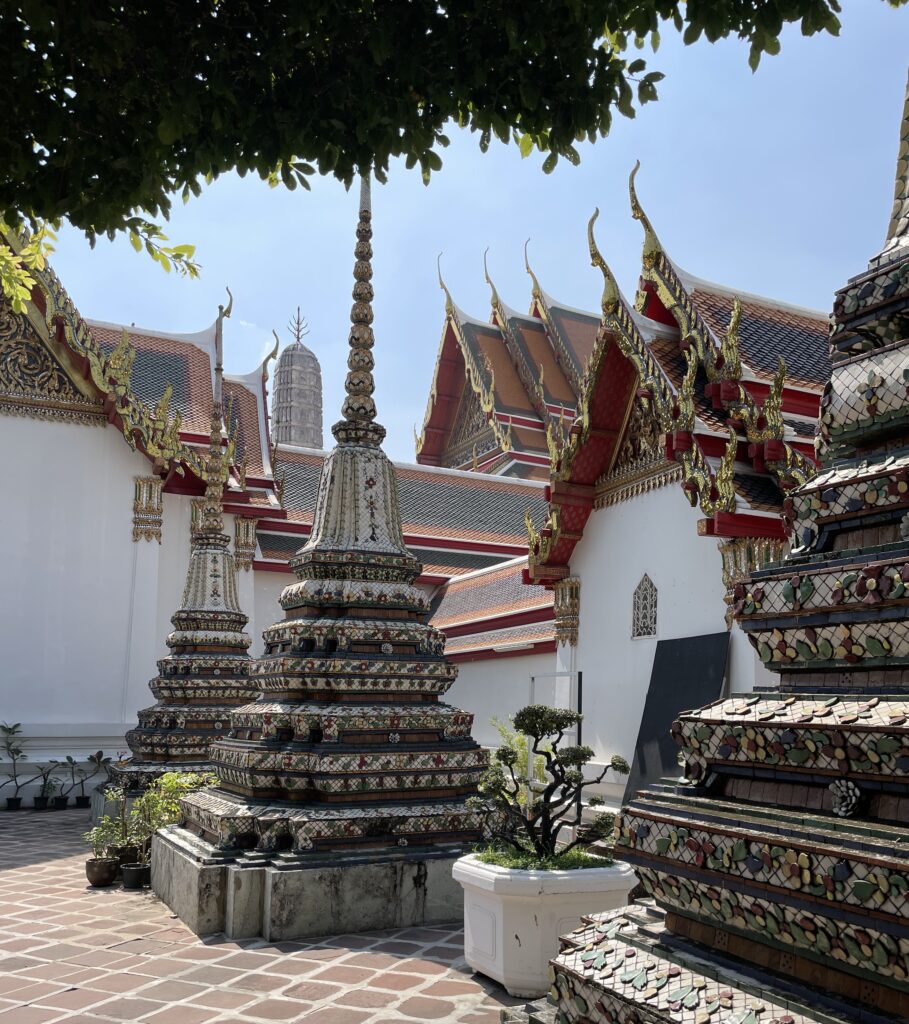
Thailand is hot, no doubt. However, when visiting temples or sacred sites, dressing respectfully is a non-negotiable requirement.
You don’t need to wear anything fancy, but showing too much skin (shoulders, cleavage, upper thighs) is considered inappropriate in religious settings.
Temples (or wats) aren’t just tourist attractions; they’re living, breathing parts of the community. And while some do offer sarongs or wraps to cover up if you’re not dressed appropriately, it’s always better to come prepared.
- Skip the tank tops, crop tops, or short shorts.
- Opt for loose, breathable clothes that cover your shoulders and knees.
- Slip-on shoes are ideal: You’ll be taking them off a lot (more on that soon).
This isn’t about following strict rules for the sake of it. It’s about being mindful of the environment you’re in, and showing a little cultural awareness goes a long way in being a respectful traveler.
Oh, and here’s a Thailand trip tip you don’t want to overlook: If you need to cover up at a temple, sarongs or Thai scarves often cost more on-site. Grab one ahead of time and keep it handy.
The Wai: Greeting with Grace
The wai is one of the most iconic gestures you’ll encounter in Thailand, and one that holds deep cultural significance. It’s not just a hello; it’s a sign of respect.
To do a wai, place your palms together in a prayer-like position and bow your head slightly. The higher your hands are placed, the more respect you’re showing. For example, monks or elders get a higher wai than someone your own age.
Now, as a tourist, don’t stress about doing it perfectly. Locals don’t expect visitors to get it exactly right. While you’re at it, learn a few Thai phrases for your trip!
That said, if someone gives you a wai, it’s polite to return it with a smile and a gentle nod, especially when in temples or when speaking to someone older.
It’s not typically used in casual settings like shops, restaurants, or markets; a smile and a simple thank you are fine there. But when in doubt, a respectful nod or light wai never hurts.
Knowing when and how to use the wai shows that you’re tuned into the cultural rhythm here.
Trust me, that kind of mindfulness goes a long way in Thailand. It’s one of those subtle travel tips for Thailand that can really elevate your interactions.
Remove Your Shoes (and Even in Some Shops)
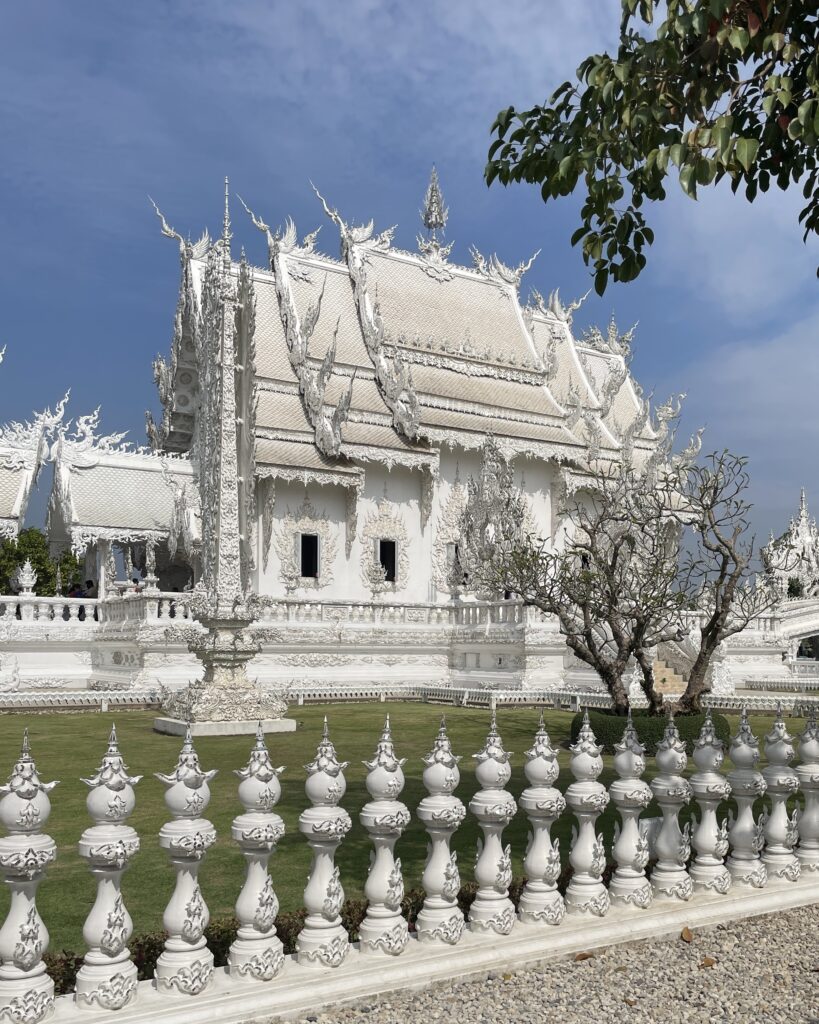
Removing your shoes before entering a home, temple, or even some small businesses in Thailand isn’t just a polite gesture; it’s expected.
It’s all about cleanliness and respect. Thai culture places great importance on keeping indoor spaces free from dirt, and since feet are considered the lowest and “least clean” part of the body, walking indoors with shoes on is seen as disrespectful.
Look for visual cues: if you see a row of shoes outside the entrance or a rack provided, take yours off before stepping in.
This applies not only to temples and traditional homes but also to some boutique shops, massage parlors, and even certain cafes.
This small habit can save you from awkward moments and shows you’ve done your homework on tourists mistakes in Thailand to avoid. Plus, it’s another one of those unspoken rules that makes you stand out as a respectful traveler, and not “that tourist.”
Speak Softly and Avoid Raising Your Voice
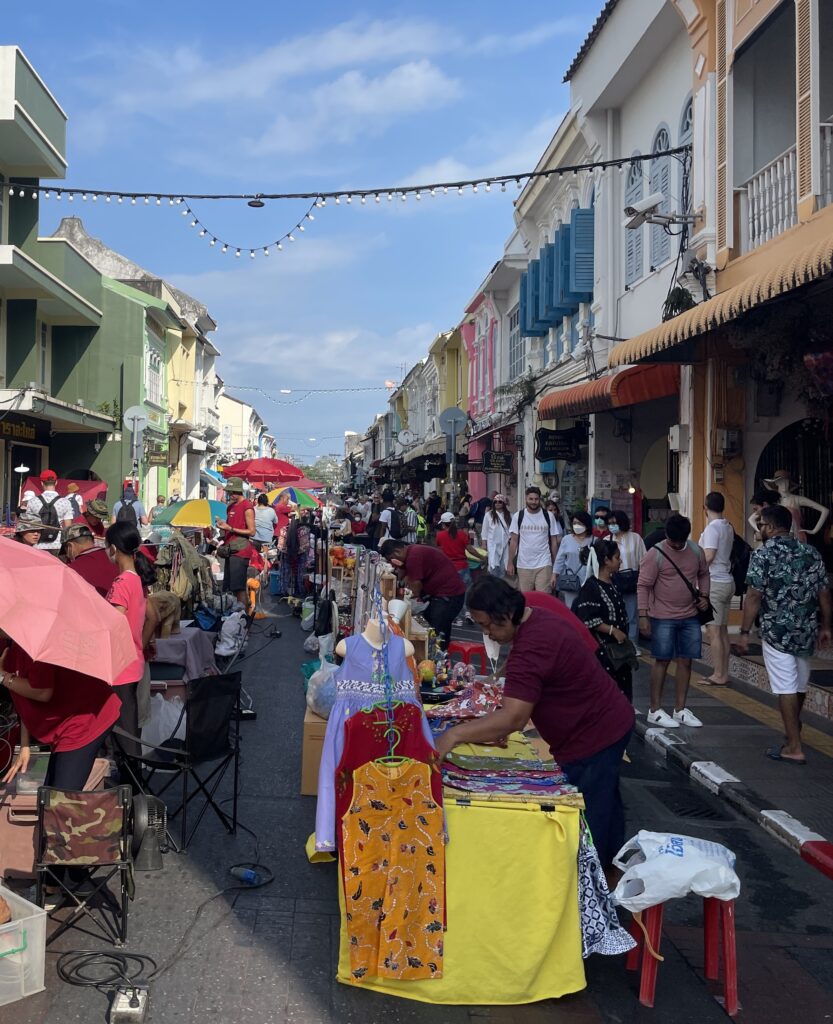
In Thailand, keeping your voice down isn’t just polite, it’s a reflection of composure and self-control, two highly valued traits in Thai culture.
Raising your voice, especially in frustration or anger, is seen as a loss of face and can make locals feel uncomfortable.
Even in crowded markets or bustling streets, you’ll notice how calm and quiet interactions tend to be.
This doesn’t mean you have to whisper, but tone matters. Whether you’re ordering food, asking for directions, or bargaining at a local market, speaking softly will earn you more respect than being loud or demanding.
Keep in mind that many Thais will go out of their way to help you, especially if you’re kind and respectful in how you communicate. This mindset carries across much of your experience; it’s not just what you say, but how you say it.
And while you’re at it, take time to explore the must-try dishes in Thailand, a shared meal often opens the door to a deeper cultural connection.
Avoid Touching Anyone’s Head, Including Children
In Thai culture, the head is considered the most sacred part of the body. Even with close friends or children, touching someone’s head can be seen as disrespectful or intrusive.
While a friendly pat might seem harmless to you, it can make a local uncomfortable.
This is especially important when interacting with monks or elders, where maintaining proper boundaries is key. When in doubt, don’t reach for someone’s head, even playfully.
It’s one of those small but meaningful gestures that shows you respect local customs.
Respect the Royal Family Always
The Thai royal family is deeply revered, and showing disrespect toward them isn’t only frowned upon but also illegal.
Criticism of the monarchy can result in serious legal consequences under Thailand’s strict lèse-majesté laws.
As a visitor, the best approach is simple: follow the laws of the country you’re visiting and be respectful at all times, this includes both in-person and online.
Respecting the monarchy is a core part of Thai etiquette for tourists, and it’s one of those unwritten rules you don’t want to break, even unintentionally.
Never Point Your Feet at People or Religious Objects
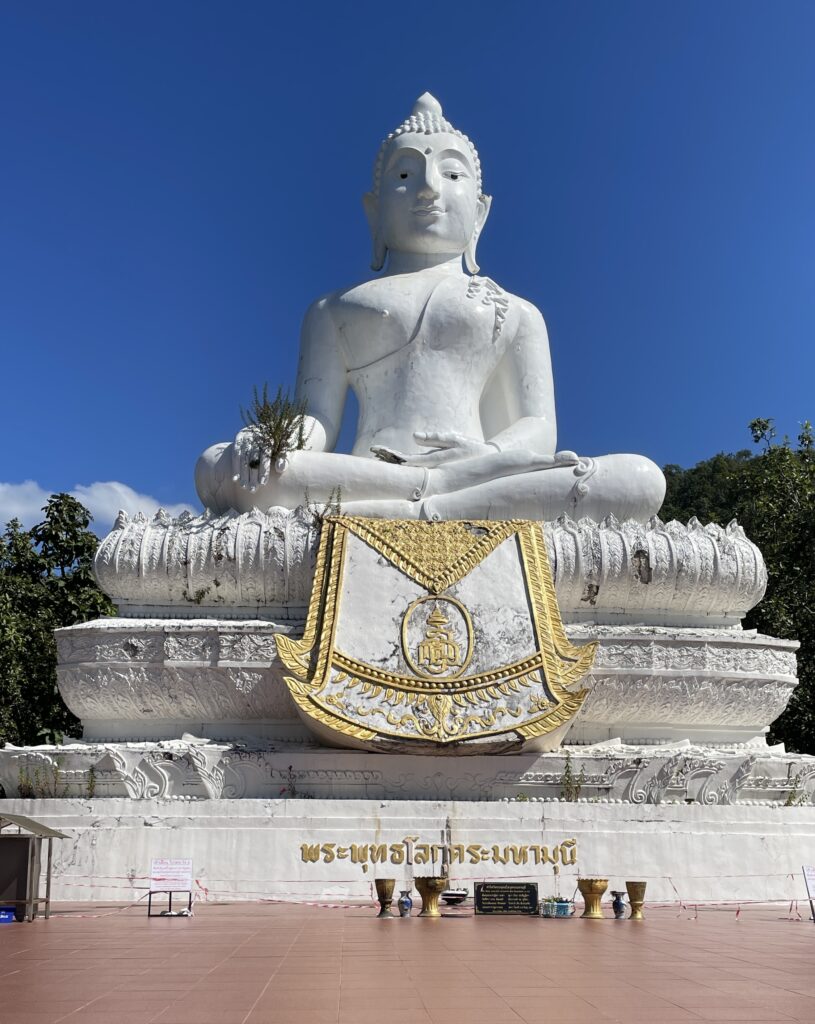
In Thai culture, the feet are considered the lowest and dirtiest part of the body, both physically and symbolically.
Pointing your feet at someone, especially a monk or an elder, is considered highly disrespectful.
This is especially important when visiting temples. Always sit with your feet tucked behind you or to the side, never stretched out toward Buddha statues or people. If you’re sitting cross-legged, double-check your posture before settling in.
It’s a small gesture, but one that goes a long way in showing respect for local customs.
Another one of those unspoken rules that separates thoughtful travelers from those who are clueless.
Offer Your Seat on Public Transport to Monks, Elderly, or Pregnant Women

Thailand has a strong culture of respect for age, religious devotion, and motherhood.
On public transport, whether it’s the BTS Skytrain in Bangkok or a local bus in Chiang Mai, giving up your seat to monks, elderly passengers, or pregnant women isn’t just polite, it’s expected.
If you’re getting around in Bangkok, having the right apps to download for Thailand can make navigating public transport much easier. But etiquette still matters, especially on crowded trains or buses.
Some seats are even marked as priority for monks. If you’re unsure, observe how locals behave and follow their lead.
It’s a small but essential way to show respect, something locals always appreciate.
Smile Often — It Reflects Goodwill
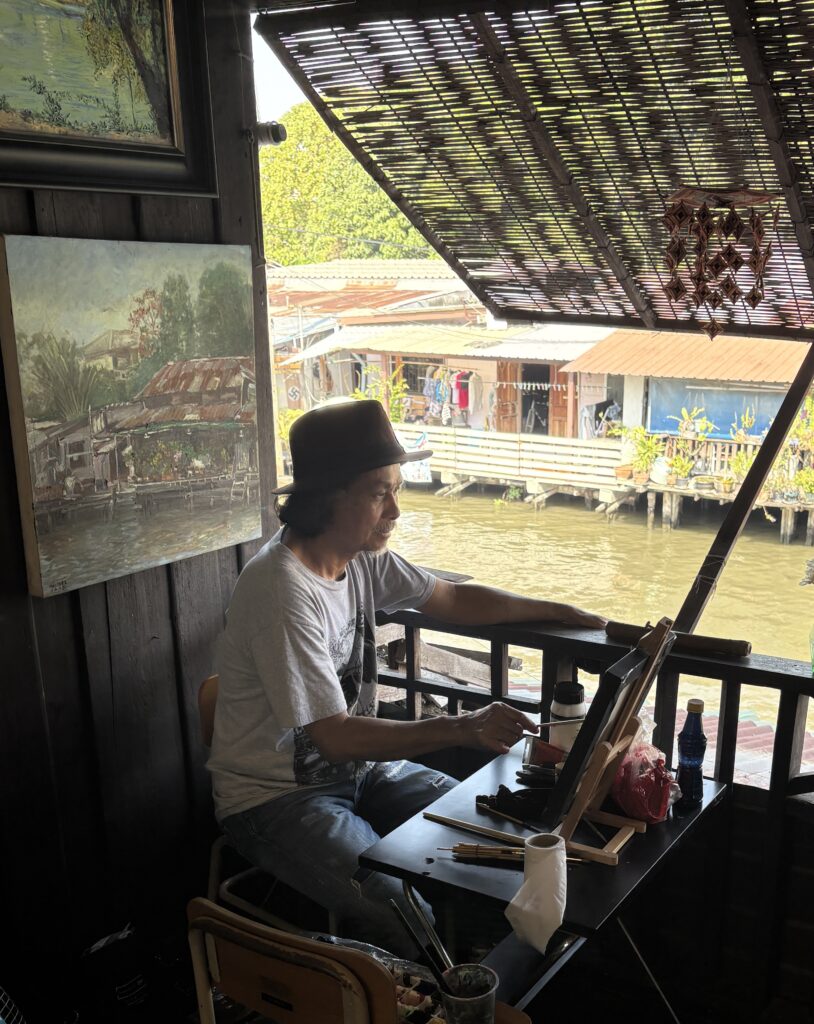
In Thailand, a smile goes a long way. It’s not just a reaction to something funny; it’s a form of communication.
Thais smile when they’re happy, embarrassed, thankful, apologizing, or even navigating awkward situations. Thailand isn’t named “the Land of Smiles” for no reason!
You don’t need to force it, but keeping a warm, open expression can help avoid misunderstandings and smooth over language barriers.
The Thai smile embodies a cultural value of maintaining a light, respectful, and non-confrontational demeanor.
It’s one of the simplest, yet most effective ways to build rapport with locals, and a great unspoken tool in your cultural etiquette toolkit.
Remove Hats and Sunglasses in Religious Spaces
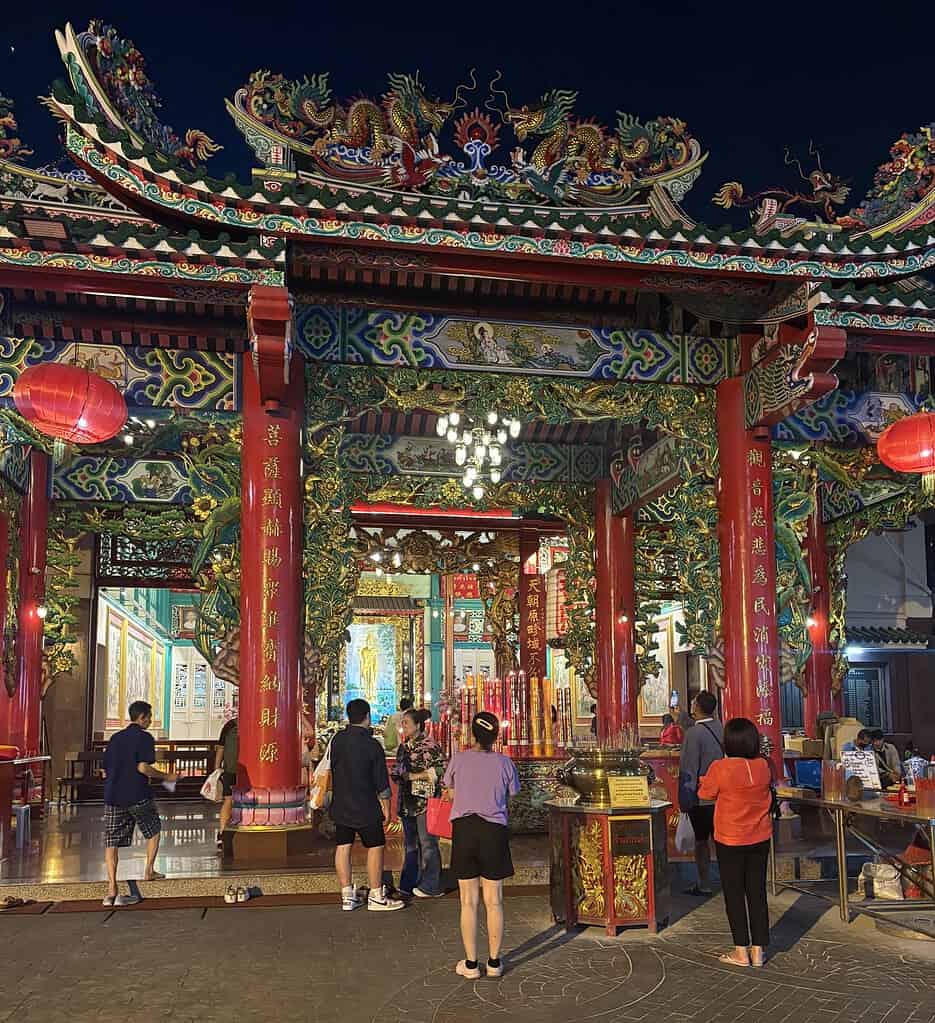
When visiting temples or sacred sites in Thailand, it’s customary and respectful to remove your hat and sunglasses before entering.
This small act demonstrates humility and reverence, especially when entering a worship area or standing before a Buddha statue.
Even if you’re outside but still on temple grounds, it’s good practice to remove these items when approaching prayer halls or sacred objects.
As a tourist, look around: if locals are taking off their caps or shades, follow suit.
Remember, this isn’t just about photography etiquette or avoiding sun glare. It’s a sign of respect that locals will notice.
Be Mindful of Public Displays of Affection
Thailand is generally conservative when it comes to public affection. While holding hands is usually acceptable, anything beyond that, such as kissing or close cuddling, is considered inappropriate, especially in rural areas, temples, or around elders.
This isn’t about judgment; it’s about aligning with the local culture, where modesty and subtlety are highly valued.
Keep in mind that what might seem like a small gesture in your home country can have a very different impact here.
Save the affection for private moments, and you’ll avoid unwanted stares or discomfort for you and those around you. It’s also part of the culture, so be respectful, you’re a visitor, after all.
Be Respectful When Discussing Thai Culture
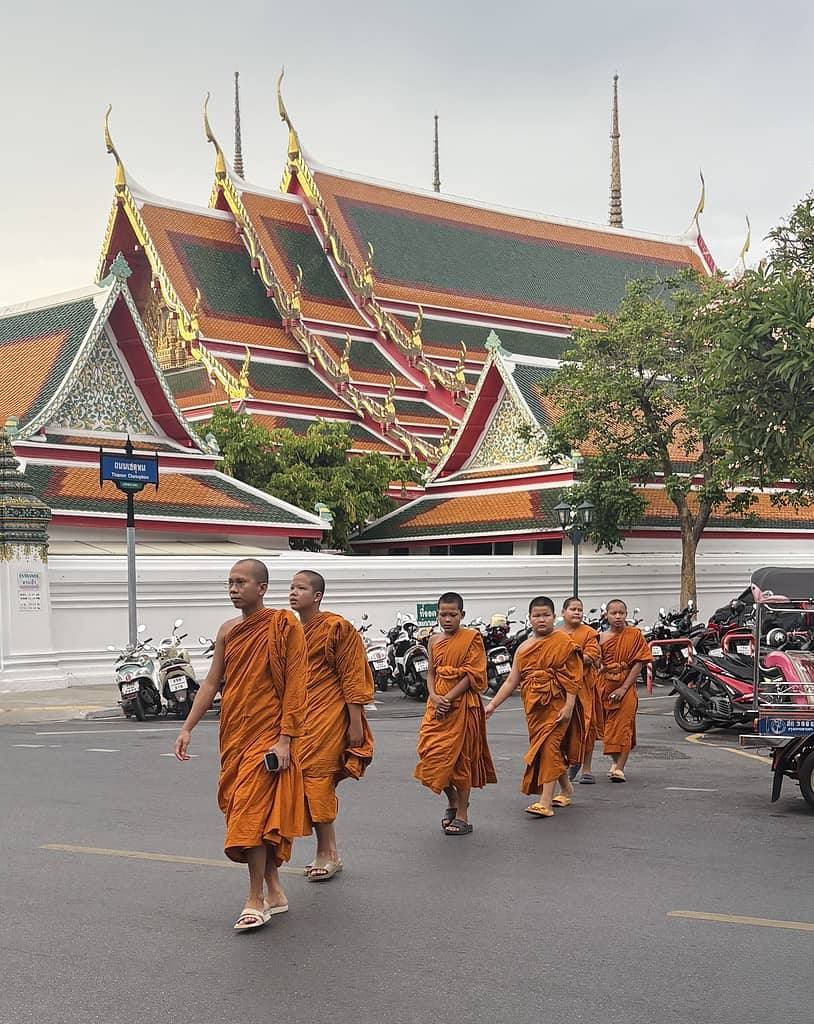
Thailand boasts a rich and complex cultural heritage, one that locals take pride in and visitors are expected to respect.
While it’s totally normal to have questions or even curiosities, how you speak about Thai customs, religion, or traditions matters more than you might think.
If something feels different or unfamiliar, approach it with curiosity rather than criticism. Even casual jokes or dismissive comments (especially about Buddhism or the monarchy) can come off as insensitive.
And with social media being what it is today, it’s not just what you say in person, but even what you post online should be mindful.
When in doubt, listen more than you speak and ask questions respectfully. This goes a long way, and it’s one of those what not to do in Thailand reminders that can help you avoid misunderstandings entirely.
Stay Calm and Avoid Confrontation
Thais generally value sanuk (enjoyment), harmony, and maintaining a peaceful public atmosphere.
Losing your temper, whether it’s yelling at a vendor, arguing in traffic, or complaining loudly at a hotel, won’t just be seen as rude; it could deeply offend.
If you’re upset or things don’t go your way, try your best to handle the situation with patience and a calm tone.
Raising your voice or showing anger in public is often perceived as a sign of “losing face,” which reflects poorly on both parties. Staying cool, even when frustrated, earns far more respect in Thailand than being confrontational.
This calm approach will also serve you well when navigating transportation or crowded markets, especially in cities like Bangkok.
Having the right essentials from your what to pack for Thailand list will help you stay prepared and stress-free in any situation.
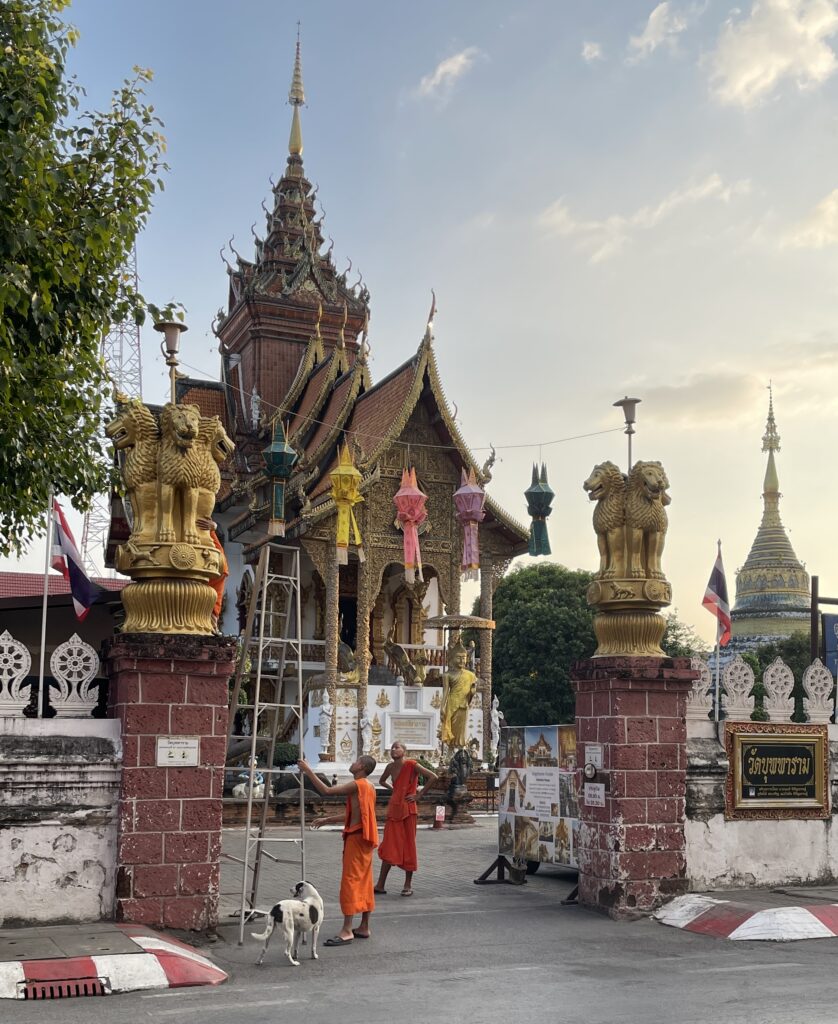
Final Thoughts on Cultural Etiquette in Thailand
Traveling through Thailand isn’t just about seeing temples, eating incredible food, or lounging on postcard-perfect beaches.
It’s also about understanding the culture that makes this country so special. Respect, humility, and awareness go a long way here.
Whether you’re navigating busy city streets or visiting sacred spaces in the countryside, a little effort to understand Thai etiquette for tourists can completely transform your experience.
You don’t need to be perfect. Locals are warm and forgiving, especially if they see you’re trying. What matters most is your mindset, approaching each interaction with curiosity and kindness.
And remember, being mindful of cultural norms doesn’t just improve your trip; it can also impact your Thailand trip cost.
From dressing appropriately to avoiding faux pas that might lead to unexpected expenses or awkward situations, etiquette and budget often go hand in hand.
Treat Thailand with the same respect it gives its visitors, and it’ll return the favor tenfold.
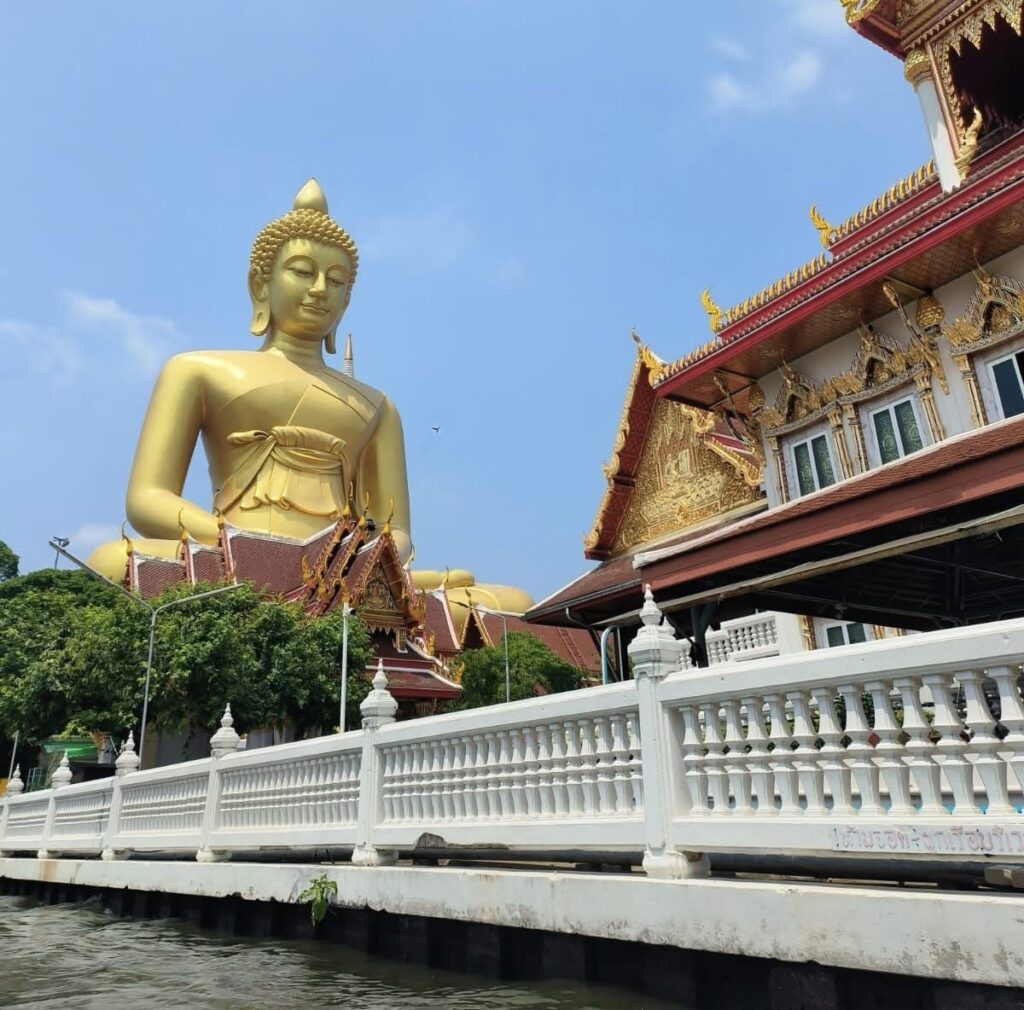
Do tourists need to follow Thai cultural etiquette strictly?
While tourists aren’t expected to know everything, showing respect and effort goes a long way. Small gestures, like dressing modestly at temples or removing your shoes, are greatly appreciated and reflect well on you as a visitor.
Is it okay to touch a monk or take photos with one?
Men can speak with monks, but women should avoid physical contact altogether. Always ask for permission before taking a photo, and never touch a monk’s robe or body out of respect for religious customs.
What should I wear when visiting temples in Thailand?
Modest clothing is a must. Cover your shoulders and knees, and avoid sheer or tight-fitting clothes.
Bringing a lightweight scarf or sarong is handy if you’re unsure, especially since purchasing one at a temple can be more expensive.
Can I show public affection with my partner in Thailand?
While holding hands is generally fine, kissing or hugging in public is considered inappropriate in most places. It’s best to keep affection private out of respect for local norms.

